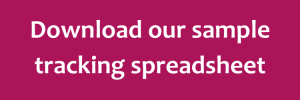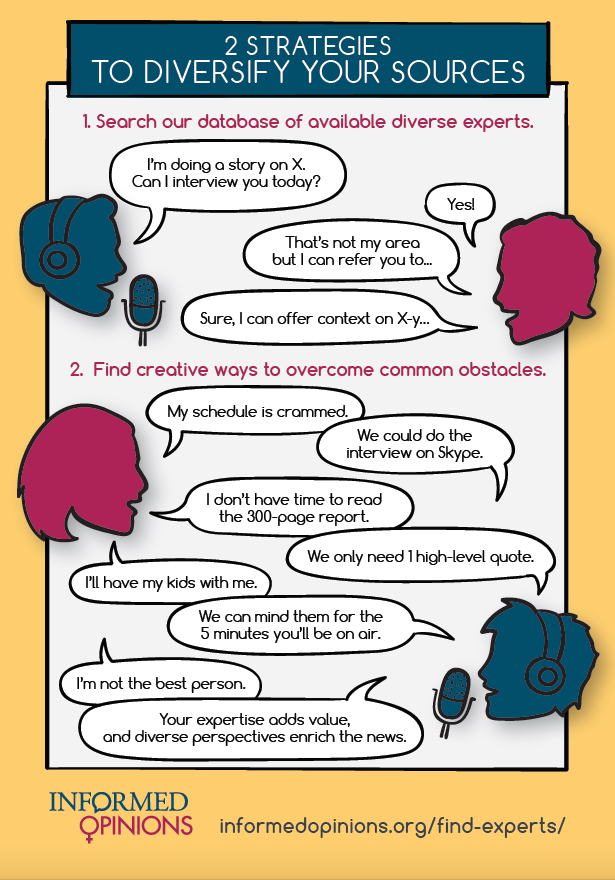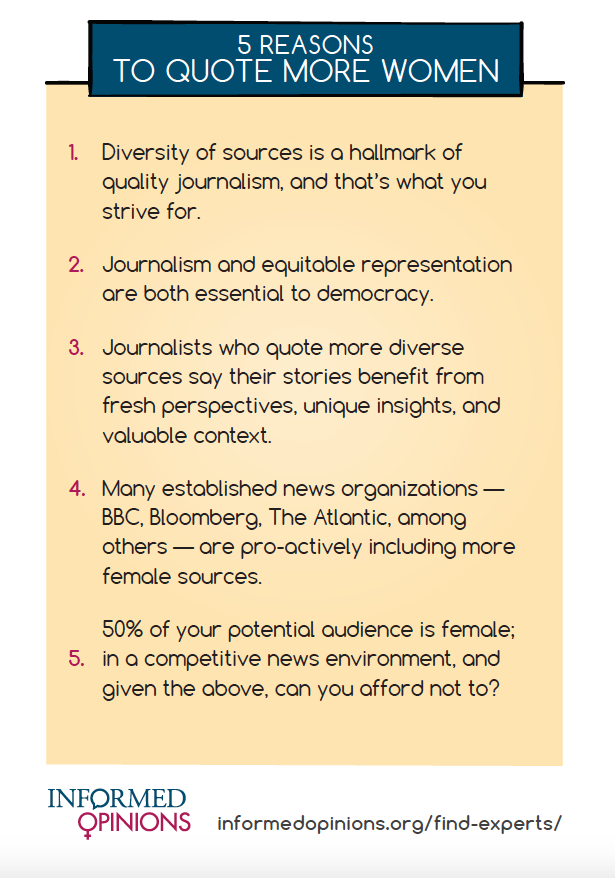Diverse sources are a hallmark of quality journalism, as the pledge below makes clear.
More and more journalists around the world are publicly committing to better reflect the audiences they serve by ensuring their stories feature perspectives informed by diverse experience. And many are monitoring their own performance in pursuit of this goal.
Track your success
To easily track your sources to contribute to more inclusive public conversations …

Respected news organizations actively track the gender ratio of their sources. They’ve found that doing so results in richer stories, as well as more diverse and nuanced perspectives that better reflect the realities of the citizens they serve.
Adrienne Lafrance, now the Executive Editor at The Atlantic, wrote in 2015 about what she learned from analyzing a year of her reporting for gender bias.
Ed Yong, a science reporter for The Atlantic calls his tracking spreadsheet “a vaccine against self-delusion” and explains why he spent two years trying to fix the gender imbalance in his stories.
Ros Atkins, a producer at BBC, challenged his producer colleagues to monitor the gender of their sources in pursuit of achieving a 50-50 balance.
Bloomberg News is actively working to improve gender balance and increase ethnic diversity of their sources.
Take the pledge
Whereas…
-
- Responsible journalism is fundamental to sustaining democracy, holding the powerful to account and ensuring citizens can make informed decisions;
-
- News media help define issues, influence opinions and shape public policy;
-
- Sources that are quoted and featured by media have greater influence than those whose voices are not amplified;
-
- Research makes clear that including women’s perspectives better represents the realities of all citizens’ lived experiences, improves decision-making, and increases the effectiveness and accountability of public policy;
-
- Qualified women with diverse backgrounds exist in virtually every field;
-
- What gets measured gets managed*; monitoring the contributions made by women and other underrepresented groups reminds journalists of the value of effectively reflecting the full diversity of perspectives among the citizens they serve
I pledge to track the gender ratio of my sources to hold myself accountable and better represent a diversity of perspectives in my journalism.
* The Atlantic’s Ed Yong calls his own tracking spreadsheet “a vaccine against self-delusion.” Since Yong began tracking his sources, he’s been able to achieve a 50-50 gender balance. He estimates that the achievement required an investment of approximately one additional hour of work per week.
Strategies to diversify your sources
Our databases of qualified sources make it easy for you to find women with informed opinions who have committed to responding to media queries. And tacking this downloadable postcard to your wall will serve as a visible reminder of why it’s important. Strategies to diversify your sources





